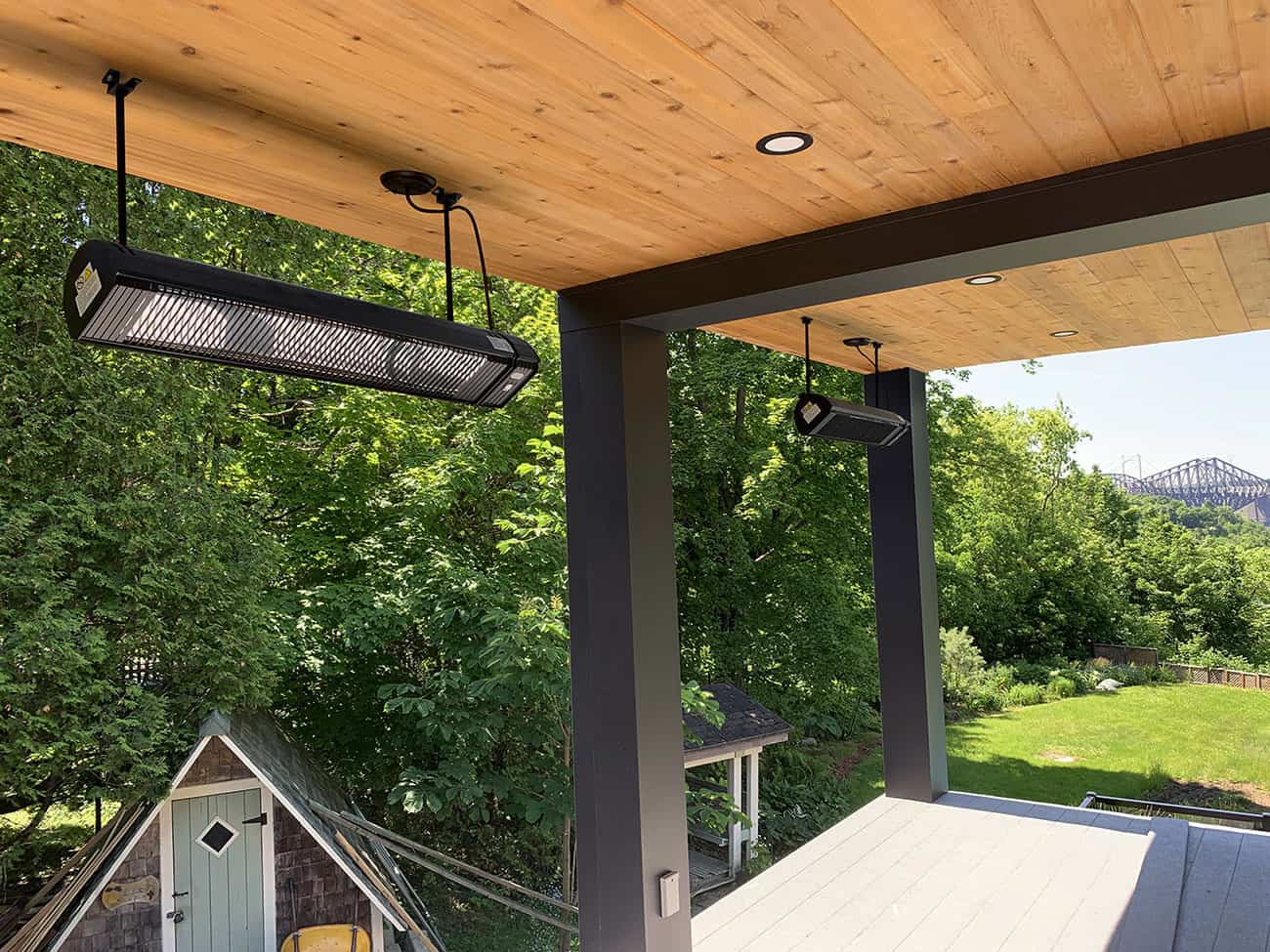How Do Infrared Heaters Work?
Infrared heaters have become increasingly popular for their energy efficiency, quick heat delivery, and ability to create a cozy environment in various settings. As a type of electric heater, infrared heaters use radiant heat to create warmth by transferring thermal energy directly to objects without heating the intervening air, similar to the heat from the sun or a fire. But how exactly do these heaters work? Understanding the mechanics behind infrared heaters can help you make informed decisions about using them in your home or workplace.
What is Infrared Heat?
Infrared heat is a type of radiant energy similar to the heat we feel from the sun. It’s part of the electromagnetic spectrum, just beyond the visible light range. Unlike conventional heaters that warm the air, infrared heaters emit infrared radiation, which directly warms objects, people, and surfaces without heating the air in between. This form of heat transfer is known as radiant heating. Radiant heat transfers thermal energy directly to objects without heating the intervening air, similar to the warmth from the sun or a fire.
If you’re interested in learning more about how infrared heat, you can explore further here.
How Infrared Heaters Work
Electric infrared heaters operate on a simple principle: converting electricity into infrared radiation.
Here’s a step-by-step breakdown of the process:
Infrared Emitter
The core component of an infrared heater is the heating element. These heating elements can be made from quartz, carbon, or ceramic materials. When electrical energy flows through the heating element, it heats up and produces infrared radiation.
Reflector
A reflector, typically made of polished metal, is positioned behind the emitter. Its role is to direct the infrared radiation outward, focusing the heat where it’s needed most.
Heat Emission
The emitted infrared radiation travels through the air without heating it. This process is an example of radiant heat, where thermal energy is transferred directly to objects. Instead, it is absorbed by objects, such as furniture, walls, and people. When these objects absorb the infrared radiation, their molecules begin to vibrate, generating heat and warming the surrounding area.
Heating Effect
Because infrared heaters don’t rely on warming the air, they provide a consistent and direct heat source. This makes them particularly effective in spaces where traditional heaters might struggle, such as large, open rooms or outdoor patios.
To see how our cutting-edge technologies are integrated into our products, visit Our Technology page.
Types of Infrared Heaters
Infrared heaters come in several types, each with its specific applications and benefits:
Quartz Infrared Heaters
These heaters use quartz bulbs as the infrared emitter. Quartz heaters are known for their rapid heating capabilities and are often used in residential settings.
Ceramic Infrared Heaters
Ceramic elements are used in these heaters, offering a softer and more evenly distributed heat. They are commonly used for indoor heating, providing a gentle warmth that is ideal for smaller spaces.
Carbon Infrared Heaters
Carbon heaters use carbon fiber elements to emit long-wave infrared radiation. These heaters are durable and efficient, making them suitable for both indoor and outdoor use.
Industrial Infrared Heaters
Industrial infrared heaters are designed for high-temperature applications and are used in industrial settings. They are known for their efficiency and cost-effectiveness, catering to various industrial applications with specific characteristics such as material composition and temperature capabilities.
Benefits of Infrared Heaters
Infrared heating offers several advantages over traditional heating methods:
Energy Efficiency
Infrared heaters reduce energy waste by directly heating objects and people rather than the air. This efficiency translates into lower energy bills, especially in environments where targeted heating is needed.
Instant Heat
Unlike conventional heaters, which take time to warm the air, infrared heaters provide immediate warmth. This makes them ideal for intermittently used spaces, such as workshops, garages, or patios.
Health Benefits
Infrared heaters do not circulate air, which reduces the spread of dust, allergens, and other airborne particles. The gentle warmth can also relieve muscle aches and pains, making these heaters popular in therapeutic settings.
Quiet Operation
Since infrared heaters do not rely on fans or blowers, they operate quietly, creating a peaceful environment in your home or workspace.
Applications of Infrared Heaters
The versatility of infrared heaters makes them suitable for a wide range of applications:
Residential Use
Infrared heaters are commonly used in homes to provide warmth in specific rooms or outdoor areas. Their ability to deliver targeted heat makes them a popular choice for patios, sunrooms, and living spaces. Most infrared heaters have low operational costs, making them an economical choice for home use.
Commercial and Industrial Use
In commercial and industrial settings, infrared heaters efficiently heat large, open spaces like warehouses, factories, and outdoor venues. Their direct heating method is especially effective in environments with minimal air circulation.
Therapeutic Use
Infrared heat is often used in saunas and other therapeutic settings. The deep, penetrating warmth can help with muscle relaxation, pain relief, and improved circulation.
Conclusion
Infrared heaters offer a unique and efficient way to warm your space. By directly heating objects and people, rather than the air, these heaters provide quick, consistent warmth that can reduce energy costs and create a comfortable environment. Whether for residential, commercial, or therapeutic use, infrared heaters are a smart choice for anyone looking to improve their heating efficiency.
If you’re considering adding an infrared heater to your space, exploring the options from Aura Heaters could be a great start. Their range of high-quality, water-resistant heaters is designed to meet various needs, ensuring you stay warm and comfortable no matter the season.
